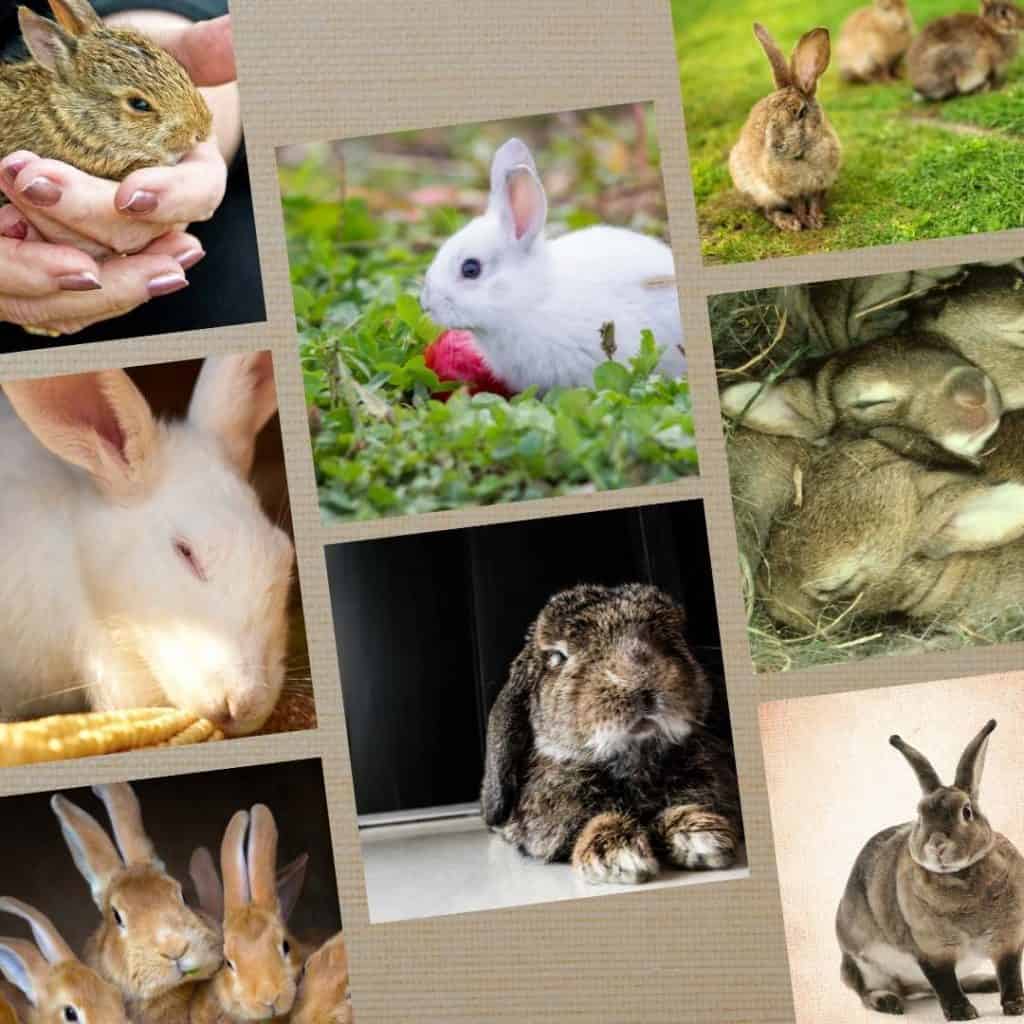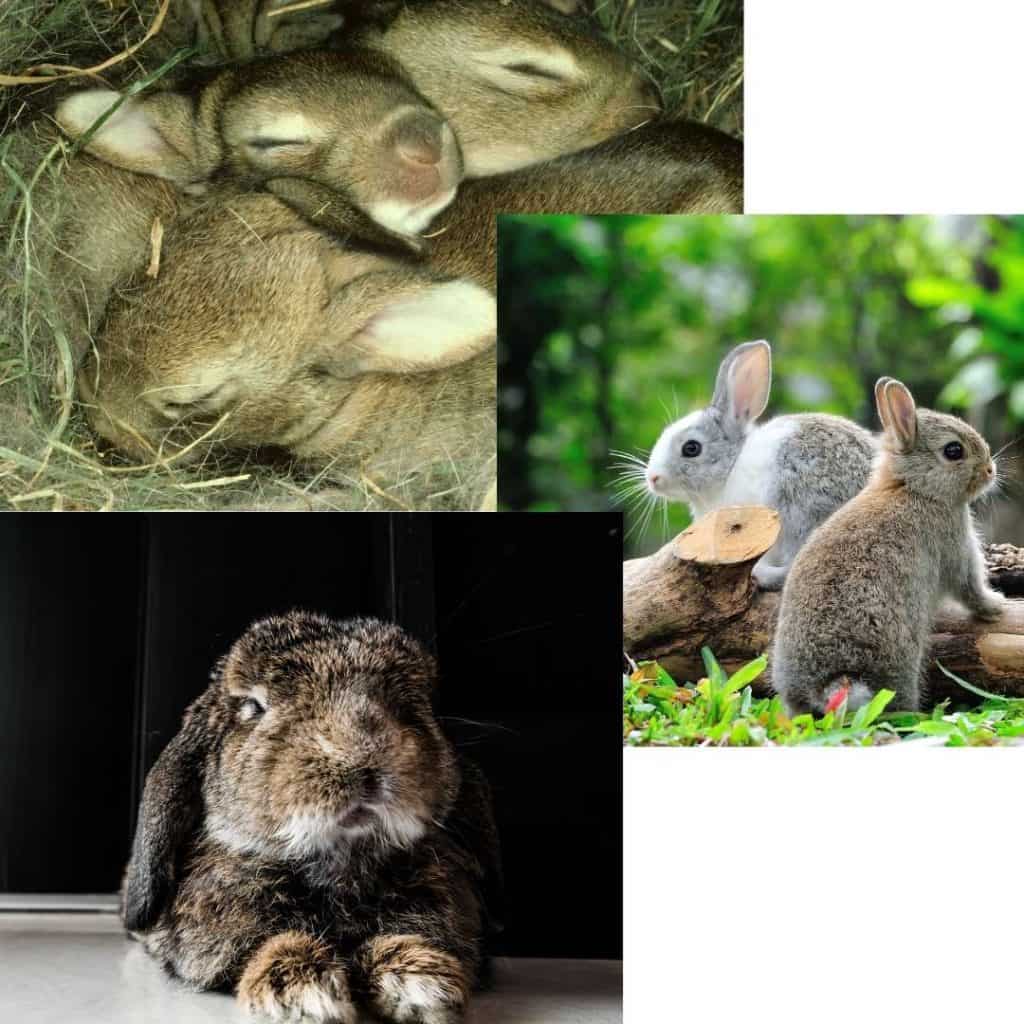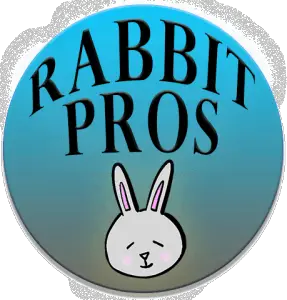Disclosure: We may earn money or products from the companies mentioned in this post.
On average, domestic rabbits live up to 9 years. and through their lifespan, they pass through a number of life’s stages. In each stage of their lives, a rabbit’s needs change and their behavior might even change. In this article, we’re going to define each of the life stages you can expect with your rabbit and some of the things you should expect at every stage of your rabbit’s life.
Keep in mind that 9 years is just an average for all domestic rabbits and the arrival of each of these stages will vary in relationship to your specific rabbit’s natural lifespan. If you want to get a better understanding of your rabbit’s expected lifespan, you should jump over and read our How Long Do Rabbits Live article first.
The Stages Of A Rabbits Life Cycle
In listing the stages of a rabbit’s life cycle, our team debated if we should start with rabbit pregnancy or rabbit embryos. In the end, we decided not to, but if you want to learn more here is a link to a comprehensive article about rabbit pregnancy.
1. Newborn Stage
Baby rabbits are called “Kits” and are considered newborns from their birth day until 3 months of age.
To be very honest, newborn rabbits look like tiny aliens, cute but weird.
Newborn bunnies weigh just 1 oz to 4 oz for the largest rabbit breeds. They are born almost hairless and with both their eyes and ears closed. They are born helpless.
First Month
The first month of a rabbit’s life sees lots of changes.
For most of the first month, kits are very dependent upon their mothers for both milk and warmth. A mother rabbit will feed her babies milk only once or twice a day and each feeding takes only a few minutes.
Without hair, they primarily rely upon their fur-filled nest and each other to stay warm. During the quick feedings, the mother will not only warm up the babies but the next as well.
Around Day 7 they will begin to grow fur. About Day 10 their eyes will begin to open. And on about day 12 their ears will begin to open.
This means that when a bunny is about two weeks old, they are finally able to see and hear their world, and will begin to peek out at the world from the safety of their nest.
During their third week, they begin to grow more quickly.

Second Month
Near the beginning of their second month of life, bunnies begin to eat a little solid food, but not much. They’ll munch on hay and nibble on pellets, starting with very small amounts as their tummies learn to digest solid food.
They can eat the same pellets and hay that their mother eats, and we encourage you to feed them high-quality food. If you’re not sure what brands are high-quality, you should jump over to our article about recommended rabbit food.
In the middle of the second month, the kits will begin to leave their nest and explore their world and by their eighth week, they are independent of their mothers though they might still sometimes nurse.
Most mother rabbits start trying to wean their babies around week eight and most rabbit breeders will separate the kits from the doe at about eight weeks of age.
If the kits are going to be rehomed, most breeders aim to have the bunnies picked up at about eight weeks of age.
Third Month
Now that the young bunnies are eating only solid food, they begin to eat a lot and grow really fast. Be sure that you’re feeding high-quality food and a healthy rabbit diet that is mostly made up of hay and supplemented with pellets and greens.
On average, rabbits will reach sexual maturity at around three months (near the end of this lifecycle stage or at the beginning of the next) with smaller rabbits reaching that milestone faster than larger rabbits. Because of this, we recommend that breeders separate males and females before they are 10 weeks old.
The saying “Breeding Like Rabbits” came about because rabbits really do breed fast. Rabbits aren’t going to worry about breeding with their brothers or sisters, so you need to get them separated. If you don’t know how to tell them apart, you should hop over to our article where we consider if boy or girl rabbits make better pets; in that article, we talk about sexing rabbits and there is even a video.
It’s worth noting here that sexual maturity is not the same as physical maturity when they reach their full adult size. These young rabbits are still growing, and won’t reach their full size until they are 5 to 18 months old depending on their breed size. You can learn more about when your rabbit will stop growing in this article.
Feeding Newborn And Young Rabbits
While newborn rabbits are living with their mother, they will eat the same hay and pellets that the mother eats. Adult rabbit feed doesn’t have the ideal nutrition for a growing bunny, but it will be fine as it’s supplemented with their mother’s milk.
As soon as your young bunnies have been separated from their mother, it’s time to change their diet to help them grow healthy and strong.
The rabbit feed that we recommend for young rabbits is Oxbow Essentials Young Rabbit Food. These pellets are made with alfalfa instead of timothy hay like the adult pellets are made from. This higher protein pellet will help your bunnies grow strong, but feeding it exclusively to an adult rabbit could lead to health problems.

Likewise, you could also feed your young rabbit’s alfalfa hay instead of timothy hay. Oxbow offers alfalfa hay for young rabbits, and you can see it on Amazon here. However, we do not recommend giving even young rabbits exclusively alfalfa hay.
This is because alfalfa is really sweet and rabbits love it. Some rabbits who grow up on alfalfa never learn to eat the healthier for adults timothy hay.
We recommend that you feed primarily timothy hay to your young rabbits with a ‘treat’ of one handful of alfalfa hay only once or twice a week.
2. Adolescent Stage
I call this “rabbit puberty”. The Adolescent Stage occurs when a rabbit is three to six months of age. This is the time where they also become fully sexually mature.
On average, male rabbits reach sexual maturity from 3 to 4 months while female rabbits reach sexual maturity between 5 and 6 months of age.
Precisely because they are now growing to be sexually mature, it is during this phase that owners might experience hormone-related behaviors such as spraying, chewing, aggression, and humping. You can learn more about common rabbit behaviors here.
Having your bunnies neutered and spayed will help reduce the problem of unpleasant hormone-related behaviors and this it’s during this Adolescent Stage is when you need to have your bunny fixed.
Most rabbit veterinarians recommend neutering male rabbits around 4 months of age and spaying female rabbits at around 6 months of age.
You need to find a good rabbit veteran early, so you can find out what ages they recommend for these procedures. You also need to learn more about the procedure so you can make an informed decision. To that end, I’m going to give you links to a few more resources.
Here is an article about finding a good rabbit veterinarian.
The next article was written by a veterinarian and explains the rabbit spaying and neutering procedure.
And this final article talks about the cost of getting a rabbit fixed and how to keep the cost down.
Feeding Adolecent Rabbits
You should continue to feed your rabbit the higher protein alfalfa pellets that we recommended above until they are fully grown.
For your convenience, here is a link to the pellets we recommend on Amazon.
3. Teenage Stage
This period stage is from six months of age to the rabbit is one year old.
During this stage, most rabbits reach their full adult size. The only exception to this is very tiny rabbit breeds which will physically mature earlier and truly giant rabbit breeds which might take up to 18 months to reach their full adult size.
Now that your rabbit is neutered or spayed you need to make sure that they are eating a healthy diet and getting enough exercise so that they don’t get fat and lazy. Well, honestly you need to focus on these things for all rabbits, not just fixed rabbits. It’s just that fixed rabbits are more likely to get lazy and fat.
Bonding is also important during this stage as rabbits tend to be more standoffish as they age. This is an ideal stage to bond your bunny with a forever friend.
Feeding Teenage Rabbits
Since you should be feeding your rabbit high protein pellets until they have stopped growing, some teenage rabbits will be eating young rabbit feed while others should now be eating adult rabbit pellets.
If you’re not sure when your rabbit will be full-grown, you should check out this article about when rabbits stop growing.
If your rabbit has stopped growing, we suggest Oxbow Essentials Adult Rabbit Pellets (See on Amazon) and Oxbow Timothy Hay (See On Amazon.)

4. Young Adulthood
This phase lasts for years, usually from 1 to 3 years. Rabbits are most active during this stage of their lifecycle.
They are also keener to play and bond so maximize bonding time and exercise with your rabbits. Provide them with mental stimulations as well in the form of rabbit toys.
Feeding Young Adult Rabbits
Young adult rabbits will continue to eat a standard adult rabbit pellet, timothy hay, and greens.
5. Middle Age Stage
Middle age in rabbits starts when they’re 4 years of age up to 5 years of age.
They’re not as active as they are during their young adulthood phase but they tend to be more laid back and hence more affectionate.
Since they tend to be less active it is still important to check on their diets to avoid them getting overweight.
Feeding Middle Age Rabbits
Middle-age rabbits will continue to eat the same adult rabbit diet that they’ve been eating since they stopped growing.
6. Late Middle Age Stage
This is the phase in a rabbit’s life that starts when they reach 5 years old up to their 7th year. This is where they tend to begin to exhibit problems related to old age such as arthritis.
Rabbits might begin to need more help grooming during this stage and in sad instances might also need more help getting on and off of furniture and perhaps even moving around.
Since health problems slowly develop during this phase, you must keep vigilant for any changes in your rabbit’s appetite and behavior. Also, make sure to schedule regular health checks.
Feeding A Late Middle Age Rabbit
As your rabbit begins to show the symptoms of getting older while in the Late Middle Age Stage, you’re going to start seeing special pellets made for “Senior” or “Geriatric” rabbits. We do not recommend any of these specialized and more expensive rabbit feeds.
Continue to feed your rabbit a high-quality adult rabbit pellet, timothy hay, and greens.

7. Old Age Stage
Rabbits are considered senior rabbits when they live past seven years.
Rabbits will tend to slow down considerably during this age, so more care will be needed for them.
They might need more ramps to reach their litter boxes or their favorite space on the couch because they can’t jump very high anymore. More vigilance should also have to be given to maintaining a healthy weight so they don’t grow obese.
The care that is given during this time also helps to foster the bond between bunny and owner.
If you have a rabbit that is becoming obese, you should hop on over this article about lazy and fat rabbits.
Feeding A Senior Rabbit
Continue to feed your rabbit a high-quality adult rabbit pellet, timothy hay, and greens.
Trivia time, who is the Oldest Rabbit in the World?
The oldest domestic rabbit is Mick an Agouti Rabbit that resides in Berwyn, Illinois US. Mick is owned by Riz Lench. He celebrated his 16th birthday last February 9. 2019 but he passed on three months later on May 23, 2019.
Flopsy the wild rabbit holds the Guinness World Record for the oldest rabbit. Mick was caught in Australia on August 6, 1964. He was 18 years old before he died 10 months later. He was taken care of by L.B Walker in his home in Longford, Tasmania, Australia.
